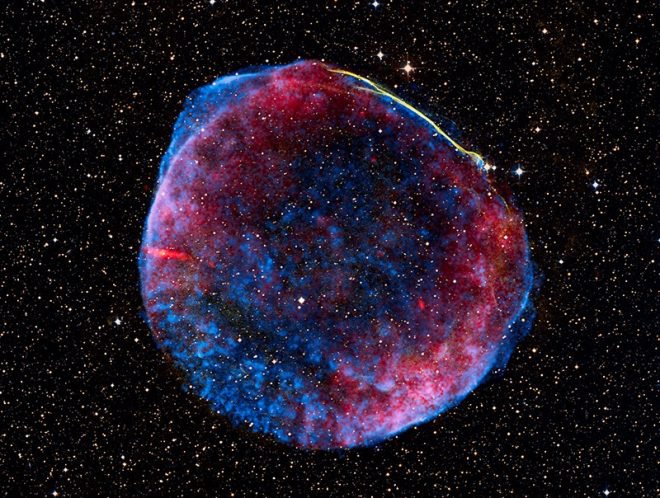
May 12, 2017
Feature Story
Supernovae Give, and Can Take Away

What is likely the brightest supernova in recorded human history, SN 1006 lit up planet Earth’s sky in the year 1006 AD. The expanding debris cloud from the stellar explosion, still puts on a cosmic light show across the electromagnetic spectrum. The supernova is located about 7,000 light-years from Earth, meaning that its thermonuclear explosion actually happened 7,000 years before the Earth. Shockwaves in the remnant accelerate particles to extreme energies and are thought to be a source of the mysterious cosmic rays. NASA, ESA, Zolt Levay (STScI)
We live in a dangerous universe. We know about meteors and comets, about harmful radiation that could extinguish life without an electromagnetic shield, about major changes in climate that are both natural and man-made.
There’s another risk out there that some scientists assert could cause large-scale extinctions even though it would occur scores of light-years away. These are supernovae – explosions of massive stars that both create and spread the heavy elements needed for life and send out high energy cosmic rays that can travel far and cause enormous damage.
As with most of these potential threats, they fortunately occur on geological or astronomical time scales rather than human ones. But that doesn’t mean they don’t happen.
At the recent Astrobiology Science Conference (AbSciCon) a series of talks focused on that last threat – starting with a talk on “When Stars Attack.”
And together five different presenters made a persuasive case that Earth was on the receiving end of a distant supernova explosion some two to three million years ago, and probably around 7 or 8 million years ago as well. The effects of the cosmic ray bombardment have been debated and disputed, but the evidence for the occurrences is based on the rock record and is now strong.